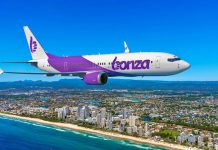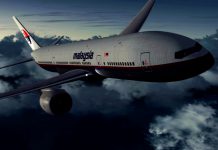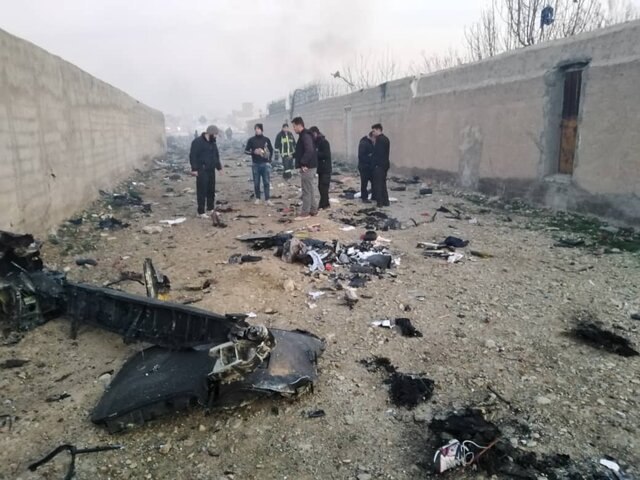Hostilities between the US and Iran could affect the investigation of a deadly Boeing 737 crash near Tehran if suggestions Iran may not share information with Boeing and US safety investigators are correct.
All 176 passengers and crew were killed when Ukraine International Airlines crashed minutes after take-off early Wednesday morning.
Passengers on the B737-800 included 82 Iranians, 63 Canadians, 11 Ukrainians, 10 Swedes, four people from Afghanistan, three from Britain and three from Germany.
READ: More than 170 dead as Boeing 737 crashes in Tehran.
Iranian officials have subsequently backtracked on initial claims that the crash involved an engine failure and a statement from the Ukrainian Embassy ruling out a terrorist or rocket attack was also taken down.
Iranian investigators have recovered the plane’s black boxes and the head of the nation’s civil aviation organization, Ali Abedzadeh, told the Mehr news agency they will not be going to the Americans.
This in itself is not unusual: it is up to Iran to extract the information from the flight recorders if it has the expertise to do so or to choose a foreign safety investigator to perform the task.
This does not have to be the US National Transportation Safety Board and Ethiopian investigators opted to send the black boxes from last year’s Ethiopian Airlines B737 MAX 8 tragedy to France.
But it is a requirement for Boeing to be a party to an investigation into the crash of one of its planes and to exclude it would be highly unusual. This is because aircraft manufacturers have the best expertise and information relating to their aircraft
Expressing its condolences to the families of crash victims, The US State Department said it would continue to follow the incident closely and offer Ukraine all possible assistance.
“The United States calls for complete cooperation with any investigation into the cause of the crash,” it said
Boeing said it was ready to assist “in any way needed”.
CNN reported that American investigators would need a special license from the US government to join the probe, assuming it was invited, because of an embargo on Iran.
The NTSB said it was monitoring developments surrounding the crash following its standard procedures for international aviation accident investigations, including long-standing restrictions under the country embargoes.
“As part of its usual procedures, the NTSB is working with the State Department and other agencies to determine the best course of action,” it said.
The timing of the accident amid heightened tensions between Iran the US is in unfortunate and raised questions about an attack on the plane.
There is as yet no evidence to suggest the plane was shot down or crippled by a bomb and five security sources quoted by Reuters said the initial assessment by Western intelligence agencies was that it was not brought down by a missile.
A Canadian source said there was evidence the engine had overheated.
What is known is that whatever happened occurred suddenly and the crew did not send out a distress call.
The plane took off at 6:13 am and climbed to about 8,000 ft before contact was lost at 6:18 am.
A video posted by news agency ISNA and said to be of the crash showed an aircraft in flames plummeting to earth and exploding.
An uncontained engine failure, where a component in the engine disintegrates and shrapnel escapes the containment ring to slam into the fuselage and wings, is one possibility but for now the cause is unknown.
The plane was a relatively new Boeing 737-800 which had been delivered in 2016 and underwent maintenance earlier this month.
The 737-800 is the predecessor to the 737 MAX grounded since March, 2019, and does not have the MCAS software linked to the two MAX crashes.
It was the first crash for Ukrainian International since its founding in 1992.
The pilots were both experienced and the captain had logged 11,600 hours on the 737 with 5,500 in command. The first officer had 7600 hours under his belt and there was also a pilot instructor on board with 12,000 hours of 737 experience.
The airline argued the experience of the crew made the probability of an error “minimal”.
























